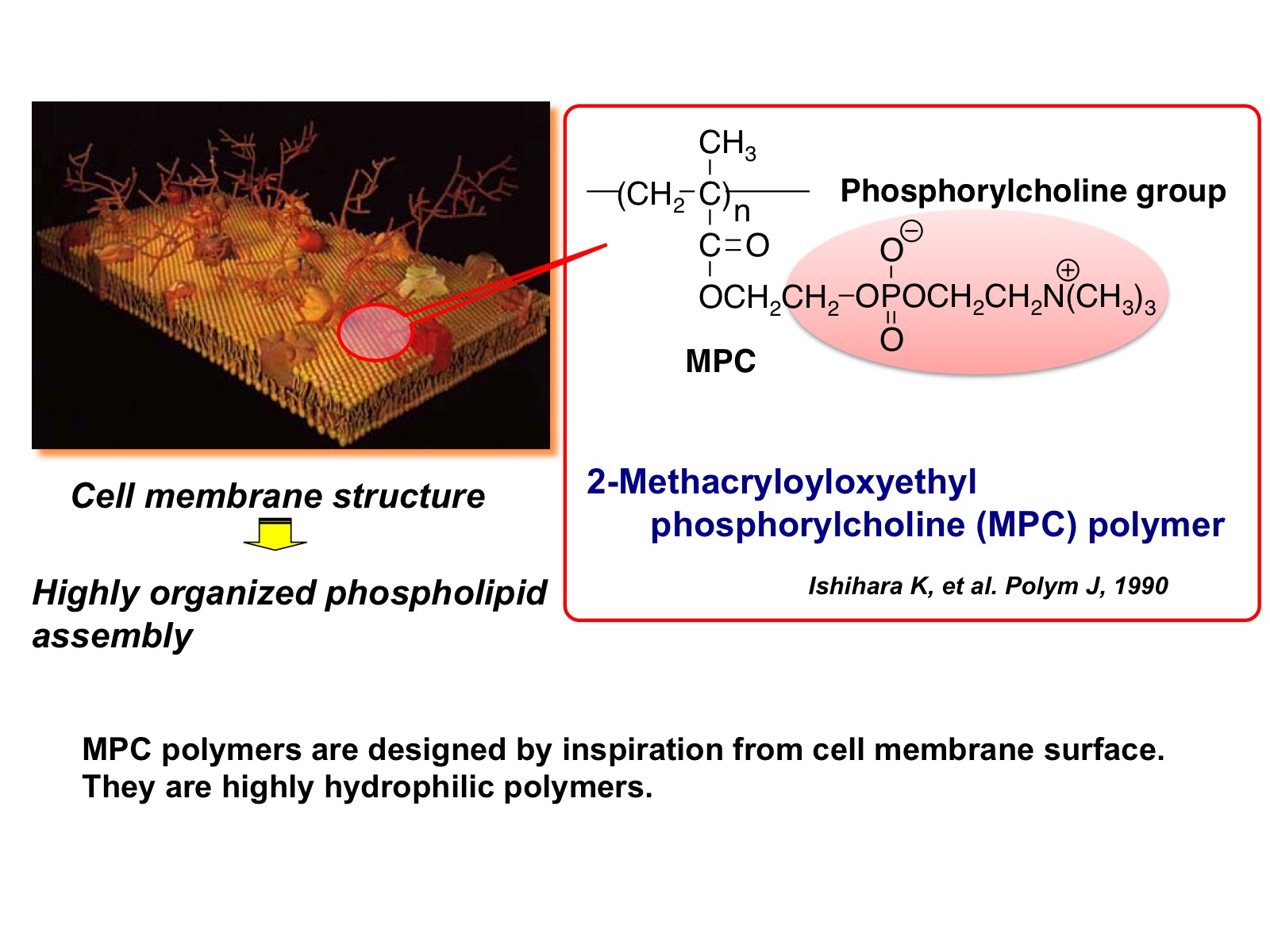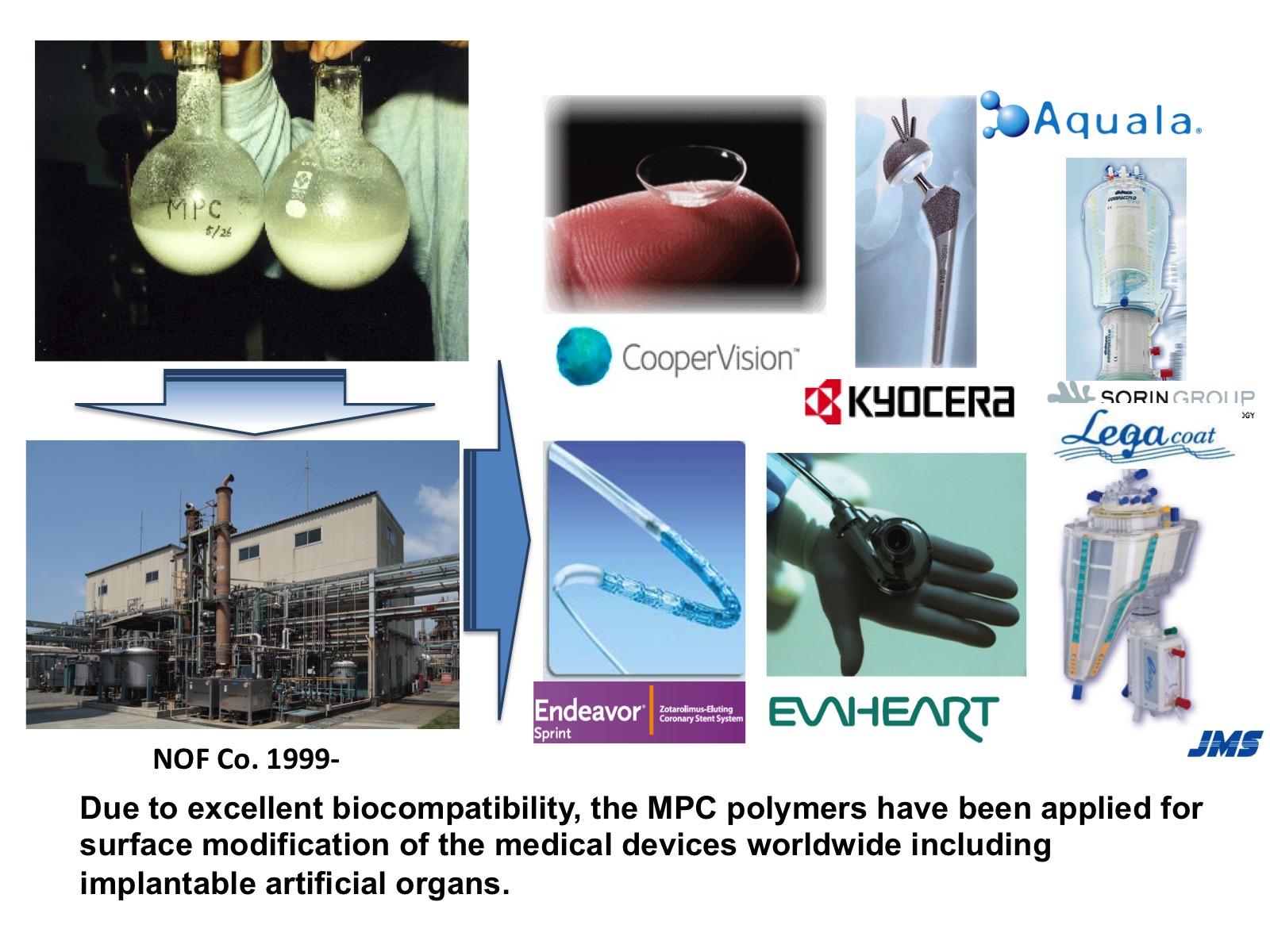A cell membrane is mainly composed of phospholipids, membrane proteins, and polysaccharides bound to lipids and proteins. The well-known “fluid-mosaic model,” first proposed by Singer and Nicolson (Fig. 1), has been used to explain the structure of the cell membrane.

According to this model, amphiphilic phospholipid molecules are arranged in a bilayer structure and the membrane proteins are positioned in or upon it. The neutral, zwitterionic phosphorylcholine (PC) group bearing phospholipids such as phosphatidylcholines are located in the outer layer of the cell membrane, whereas negatively charged phospholipid molecules such as phosphatidylserines are predominantly found on the inner, cytoplasmic side of the membrane. The PC groups immobilized surface provides an inert surface for biological components including proteins, glycoproteins, and cells. This fact provides particularly significant information for the development of polymer biomaterials. Thus, the phospholipid polymers bearing the PC group provide a significant interest in polymer science, biomaterials science, and biomedical engineering. Much research has been carried out on the synthesis of vinyl monomers bearing phospholipid polar groups. Among these, synthesized monomers-bearing PC groups have strong potential for biomedical applications. The most successful example for this purpose is 2- methacryloyloxyethyl phosphorylcholine (MPC) (Fig. 1). This methacrylate bearing PC group provides various kinds of polymers to the biomedical fields. In 1987, Ishihara and co-workers determined an excellent synthetic route and the purification method for MPC and reported it in 1990[1]. By this procedure, a sufficient amount of MPC can be obtained as a white powder (Fig. 2).

The procedure has been improved much more and transferred to the Japanese chemical company, NOF Co. Ltd., and the MPC has been synthesized on an industrial scale since 1999 (Fig. 2). An abundance of research on surface modification with MPC polymers has been carried out due to the versatility and excellent biocompatibility of these systems, and some MPC polymers have already been utilized as surface-modified materials in medical devices (Fig. 2). A biocompatible surface could be obtained via conventional materials, even through a simple coating method[2]. The physical adsorption of MPC polymers to a material surface requires there to be a hydrophobic unit in the polymer chain due to the superhydrophilicity of the MPC unit. Recent progress of the polymer science, well-defined MPC polymer can be synthesized and applied them as a surface modifier of the medical devices, such as artificial hip joint to obtain good lubrication and prevent wear of the materials.
References:
[1] K.Ishihara, T. Ueda, N. Nakabayashi, Polym J (1990) 355.
[2] K. Ishihara and K. Fukazawa, Phosphorus-Based Polymers: From Synthesis to Applications (S. Monge and G. David, Eds) RSC publishing 2014, p68.